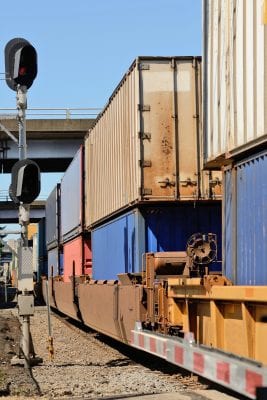FTR’s Intermodal Competitive Index (ICI) rose in October 2016, reflecting a moderately favorable environment for intermodal freight service. The ICI looks at a variety of factors including truck capacity, fuel prices, rail service, intermodal rates, and more.
What is the prediction for intermodal freight service this year?
Larry Gross, Partner at FTP and principal author of Intermodal Update said, “The fundamentals in the domestic long-haul freight sector are beginning to turn in intermodal’s favor. Truck capacity is starting to tighten as shown by increasing spot market trucking rates. While competitive conditions for intermodal remain challenging, we do expect to see sunnier skies in the coming months.”
Gross goes on to explain that intermodal has not seen a true decrease since the recession, with total activity split between intermodal and domestic container and trailer moves.
The Railroad & Rail Schedule
The key infrastructure to successful intermodal service is the location of the ramps. Specialized equipment lifts containers and trailers onto and off of the railcars. The system requires special gate control procedures, container inspections, storage areas for chasses and containers, and other facilities that are not typically available at a general-purpose rail yard.
Railroads develop scheduled train services between modes. The trains run as units with no stops between the origin and destination. This prioritization allows intermodal traffic to provide more predictable and faster service than traditional carload rail service.
What is a drayman?
A drayman is a specialized motor carrier that does the short haul between the ramp and the loader or unloader. The drayman could work directly for a carrier coordinating the load or he could be a contractor for an IMC. The dray company may own their own chasses (the trailer framework used to haul the container), or they may draw these from a pool at the ramp.
Container Options for Intermodal Freight Service
Many shippers that transport high volumes of freight have invested in their own containers. Some domestic containers are controlled by logistics companies. Railroad-controlled pools typically own other containers.
Ocean vessel companies typically provide containers that the cargo in which the freight ships on their vessels. This can create opportunities or challenges for the domestic leg of an import or export shipment. If relying on a carrier’s container to load at your origin, the shipper is dependent on a flow of containers from that shipping line into the region. As with other transportation, where there is a strong inbound flow, there is an opportunity for backhauls. But, the opposite is true when a container needs to be moved by empty miles to get loaded.

